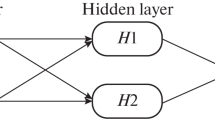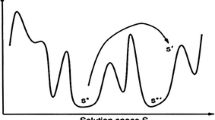Manufacturing of electronic circuits for microwave communication boards often requires tuning of different circuit characteristics by manual adjustment of several trimmer components, including the trimmer's resistance and capacitance. This manual tuning process was automated by applying the artificial neural network modeling approach. In the considered tuning process, which required manual adjustment of a set of trimmers, multiple specification criteria had to be satisfied by several trimmer rotations. The tuning process was described in terms of three independent steps: the circuit output measurement, trimmer selection, and trimmer rotation. The trimmer selection was performed by a semi-supervised neural network, which learned the patterns of circuit characteristics and the deviations between the ideal and practical outputs. Another network was developed for determination of trimmer rotation rate. The results, based on computer simulation of the tuning process, showed that the developed system improved performance of the tuning process, allowing for automation of the microwave circuit board tuning task in a real manufacturing environment.
Similar content being viewed by others
References
Baker, W. and Farrel, J. (1991) Connectionist learning systems for control. Intelligent Robots and Computer Vision IX, Proceedings of SPIE, 1382, 612–619.
Eberhart, R. C. and Dobbins, R. W. (1990) Neural Network PC Tools, Academic Press, San Diego.
Hecht-Nielsen, R. (1990) Neurocomputing, Addison-Wesley, Reading, MA.
Hsu, Y. and Chen, C. (1991) Tuning of power system stabilizers using an artificial neural network. IEEE Transactions on Energy Conversion, 6(4), 612–619.
Ishida, M. (1992) Control by a policy- and experience-driven neural network. Journal of Chemical Engineering of Japan, 25(1), 108–111.
Johnson, J. H., Picton, P. D. and Hallam, N. J. (1993) Safety-critical neural computing: explanation and verification in knowledge augmented neural networks. Artificial Intelligence in Engineering, 8, 307–313.
Ruano, A., Fleming, P. and Jones, D. (1992) Connectionist approach to PID auto tuning. IEE Proceedings Part D Control Theory Application, 139(3), 279–285.
Rumelhart, D. E., Hinton, G. E. and Williams, R. W. (1988) Learning internal representations by error propagation, in Neurocomputing: Foundations of Research, Anderson, J. A. and Rosenfield, E. (eds), Bradford, Cambridge, MA.
Ukita, A. and Kitagawa, T. (1992) A modulation package tuning machine applying fuzzy logic, in Lecture Notes in Artificial Intelligence 605, Industrial and Engineering Applications of Artificial Intelligence and Expert Systems, 5th International Conference Proceedings, Springer-Verlag, Berlin, pp. 351–360.
Zhang, T. and Veenker, G. (1991) Neural networks that teach themselves through genetic discovery of novel examples, in Proceedings of IEEE International Joint Conference on Neural Networks, 1, pp. 690–695.
Zurada, J. (1992) Introduction to Artificial Neural Systems, West Publishing Co, St. Paul, MN.
Author information
Authors and Affiliations
Rights and permissions
About this article
Cite this article
Ukita, A., Karwowski, W., Salvendy, G. et al. Automated tuning of an electronic circuit board using the artificial neural network approach. J Intell Manuf 7, 329–339 (1996). https://doi.org/10.1007/BF00124833
Issue Date:
DOI: https://doi.org/10.1007/BF00124833




